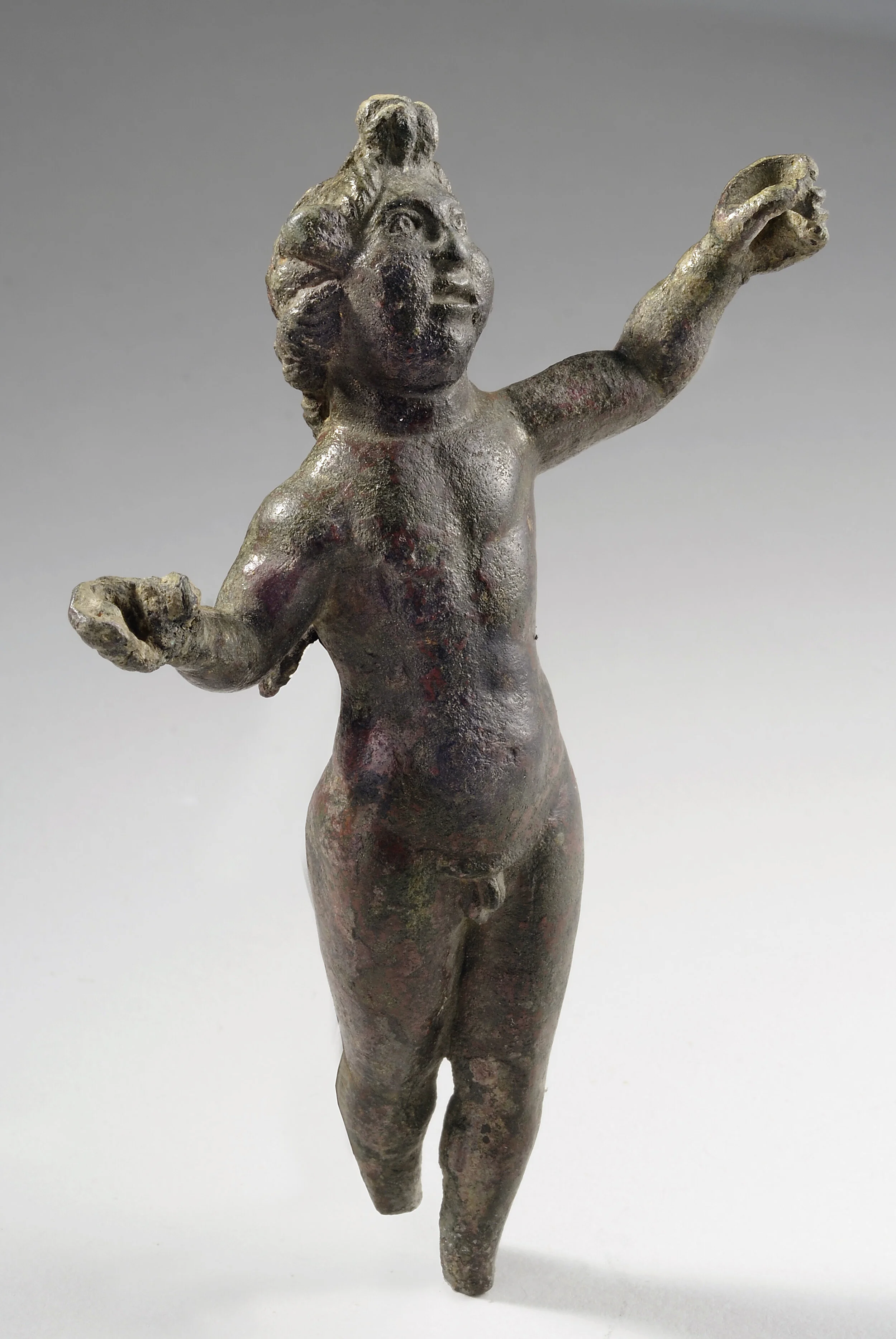Ancient Roman Glass Jar with Neck Thread
Ancient Roman Glass Jar with Neck Thread
Roman, Eastern Mediterranean, 4th century A.D.
Glass
H: 9 cm
Serial: 2612
This vessel was shaped in the free blown technique and belongs to the type sometimes called as “basket jars”. The shape is defined by the rounded and flared rim, short conical neck, low but wide globular body, and flat, concave bottom. The most distinct feature of the composition is the multiple “handles” that are attached from shoulder to rim lying flat upon the rim. The irregularities of the thickness of the glass thread and the distance between the joining points was not considered as a serious imperfection; hardly noticed, if at all, by the user. It reminds that this glasswork is uniquely handmade. In addition eleven thin trails of molten glass were added to the body of the vessel. The thread was drawn from a point of application on the bottom and trailed around the body and stops at the top of the neck. The vessel is made from the glass of two colors, the light green and purple, the variation in thickness of the glass used for the wall and the handles produces a beautiful coloristic effect. The shades of color and the translucency of glass make this vessel of unusual shape even more attractive.
Glass making technique in antiquity originated in the second millennium B. C. in Egypt and Mesopotamia and progressed from core-molding to mold-pressing and glass-cutting, subsequently to free-blowing and mold-blowing. Transparency is a natural property of the glass as a medium, and it was especially appreciated in the items of free blown glass. This technique still dominates today in both the art and industry of glass making. Blowing makes each piece individual although even in antiquity craftsmen would made series of similar products. Being a hand-manipulating process blowing is depending on the skills of the artisan. The making process required simultaneous procedures: spinning the tube with a gob of molten glass and inflating it until a desirable shape was obtained. Handles were made of heated rods of glass quickly bent and fused into place.
PROVENANCE
European private collection, acquired in 1994
BIBLIOGRAPHY
ANTONARAS A., Fire and Sand, Ancient Glass in the Princeton University Art Museum, New Haven, London, 2012, pp. 200-206.
AUTH S. H., Ancient Glass at the Newark Museum from the Eugene Schaefer Collection of Antiquities, Newark, 1976, pp. 141, 223.
EISEN G. A., Glass II, New York, 1927, pp. 429-430.
MATHESON S. B., Ancient Glass in the Yale University Art Gallery, New Haven, 1980, pp. 116-118.
WHITEHOUSE D., Roman Glass in the Corning Museum of Glass, vol. 2, New York, 1997, p. 162.








